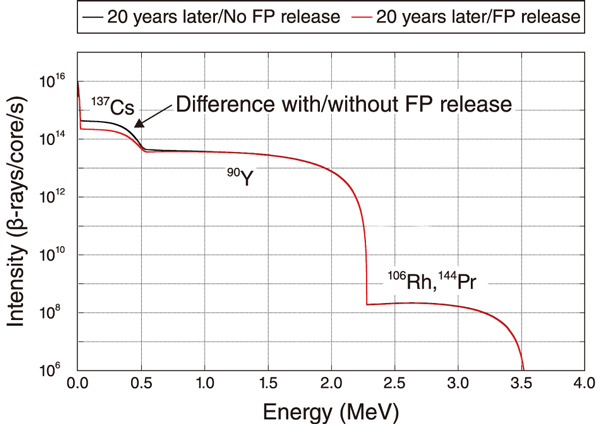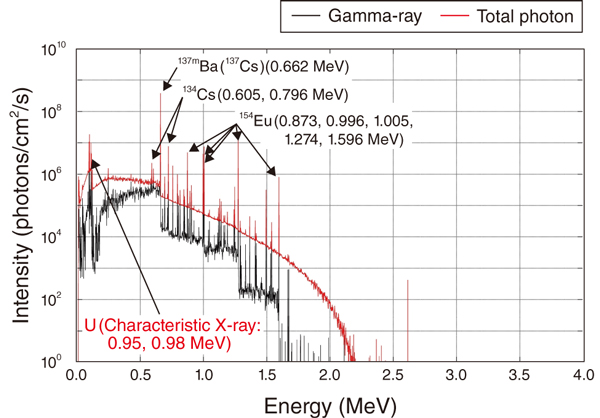
Fig.1 Calculated β-ray intensity of the FDNPS Unit 2 core 20 years after the accident with/without fission product (FP) release

Fig.2 Spectra of γ-rays and total photons emitted from fuel debris
Fuel debris produced by the accident at the TEPCO’s Fukushima Daiichi Nuclear Power Station (FDNPS) is regarded to be a mixture of molten UO2 fuel, Zr cladding, B4C control rods, and stainless steel (SUS) material. A trial retrieval of such fuel debris is planned in the near future. To handle the fuel debris safely and rationally during the retrieval process, it is necessary to clarify the characteristics of the radiation emitted from a variety of fuel debris. As a part of this effort, we characterized the bremsstrahlung X-rays emitted from fuel debris and evaluated their contribution for dose rates. These X-rays have not been examined thus far.
Generally, only the dose rate attributed to γ-rays has been examined. In the case of fuel debris, the dose rate due to the bremsstrahlung X-rays generated by β-rays from fission products (FPs) should also be considered because the fuel debris contains materials, such as uranium, with high atomic number and density. In addition, volatile FPs such as cesium (Cs) are released when the fuel melts. Hence, the intensity of the bremsstrahlung X-rays is considered to be relatively higher than that of normal spent fuel.
Therefore, we studied the production processes and spectra of γ-rays and bremsstrahlung X-rays emitted from various types of fuel debris and evaluated the maximum contribution of bremsstrahlung X-rays to the total dose rate attributed to photons (γ-rays and bremsstrahlung X-rays) using the Monte Carlo code PHITS.
Fig.1 shows the β-ray intensity (number of β-rays) in FDNPS Unit 2 core 20 years after the accident for the cases with/without FP release. This intensity was derived from Siegbahn’s formula (β-ray evaluation formula). We found that β-ray intensity below 0.5 MeV was drastically affected by the release of volatile FP: the β-ray intensity was lower when released. In contrast, Fig.2 shows that the bremsstrahlung X-rays with energy above 0.7 MeV dominate in the case of FP release. In this case, the contribution of the bremsstrahlung X-rays to the dose rate is 17%, which is 1.2 times the previously evaluated dose rate from γ-rays alone.
The generation mechanism and characteristics of bremsstrahlung X-rays from fuel debris have been clarified. This knowledge is necessary for the safe retrieval of fuel debris in the future.
(Taichi Matsumura)